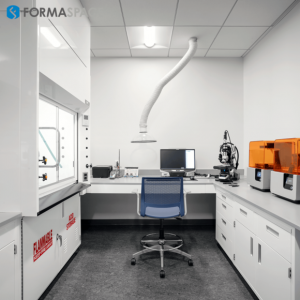Machine Learning-based AI Systems are Helping Doctors Diagnose Diseases
Find out how AI-based tools are increasingly relied on to provide diagnostic and patient support services.
AI-based genetic analysis systems can help identify those at risk for serious diseases such as cancer. Automated image analysis tools can examine X-ray and CT scans, looking for disease anomalies.”
AUSTIN, TEXAS, UNITED STATES, August 22, 2024 /EINPresswire.com/ -- AI-based medical systems are helping healthcare providers improve the care they offer to patients.— Formaspace
For example, AI-based genetic analysis systems can help identify those at risk for serious diseases such as cancer. Automated image analysis tools can examine X-ray and CT scans, looking for disease anomalies. New pathology AI tools can assist in examining biopsy samples, and clinical decision support tools can help providers identify cases of potentially dangerous conditions sooner than conventional diagnosis methods.
Some of the most recent advances include:
· Prediction of Sepsis
The sudden onset of sepsis (blood poisoning due to infection) is a life-threatening condition that must be treated quickly. However, in many cases, it’s hard to identify in practice before the condition can advance to a dangerous state. AI-based tools are proving useful in identifying potential sepsis cases earlier, before the need for urgent intervention.
· Pancreatic Cancer Diagnosis
Pancreatic cancer is another disease that typically presents symptoms only after the disease has progressed significantly, often past the point where treatment is effective. New AI-based diagnostic tools can help identify these cancers up to 18 months sooner, offering a lifeline to pancreatic disease patients.
· Pneumonia Diagnosis
A new AI-based algorithm developed at Stanford, called Swarm AI, combines the power of machine learning with direct input from doctors to create a system that is “33 percent more accurate at correctly classifying patients than individual practitioners, and 22 percent more accurate than a Stanford machine-learning program called CheXNet.”
Humans are Still Needed to Interpret AI-Sourced Medical Diagnoses to Avoid Dangerous Hallucination Errors
You might have noticed one thing that characterizes these AI-based systems.
Rather than stepping forward and interacting with patients to assess and make diagnoses directly, many of these new-generation AI-based tools work in the background, providing diagnostics information to healthcare providers, who, in turn, must decide if the results make sense.
This is an incredibly important step due to a problem known as AI hallucination.
What is AI hallucination?
You can think of it as an overly eager child (or student or co-worker) who wants to provide an answer even when they don’t have the evidence to support their position. Here the AI system is simply filling in gaps in its knowledge to provide a reasonable answer.
Hallucination rates vary, but even if they account for just a few percentage points of the total number of otherwise reliable answers, this could be devastating in the case of life-or-death decisions about healthcare.
A Virtual AI-based Nurse Makes a Splash at Nvidia’s GTC 2024 Technical Panel Presentations
Armed with this information, we were initially surprised to see a virtual AI-based nurse from Montreal-based Hippocratic AI being demonstrated during the recent Nvidia technical panel presentations at GDC 2024.
You might ask, what is going on here? Has the problem of hallucination been solved so quickly? Is the era of primary care physicians and NPs being supplanted by virtual AI healthcare providers already here?
What is the Strategy behind Hippocratic AI’s Virtual Nurse?
A second look at Hippocratic AI’s virtual nurse shows that it is NOT positioned as a front-line healthcare provider capable of diagnosing patients.
Instead, the Montreal-based company is seeking to use a combination of sophisticated AI-based conversation skills to provide much-needed ongoing support for chronic care patients who need regular (even daily) follow-up calls – for example, to help them manage their medications, arrange logistics (such as transportation to the doctor), or answer any questions about their care.
As Hippocratic AI CEO Munjal Shah explains, the average cost of a critical nurse is about $90k per annum, while the hardware and telecommunication cost to provide the virtual nurse is as little as 18 cents an hour, allowing the company to make a profit providing many of the needed follow-up care calls that go unanswered today due to high personnel costs and ongoing post-pandemic nursing shortages.
Read more...
Julia Solodovnikova
Formaspace
+1 800-251-1505
email us here
Visit us on social media:
Facebook
X
LinkedIn
Legal Disclaimer:
EIN Presswire provides this news content "as is" without warranty of any kind. We do not accept any responsibility or liability for the accuracy, content, images, videos, licenses, completeness, legality, or reliability of the information contained in this article. If you have any complaints or copyright issues related to this article, kindly contact the author above.



